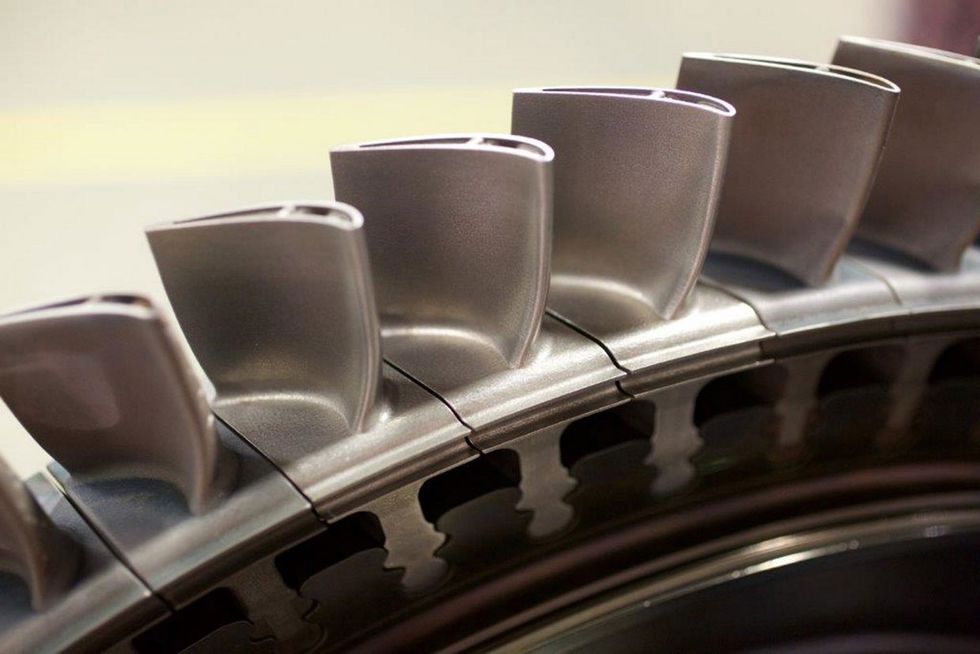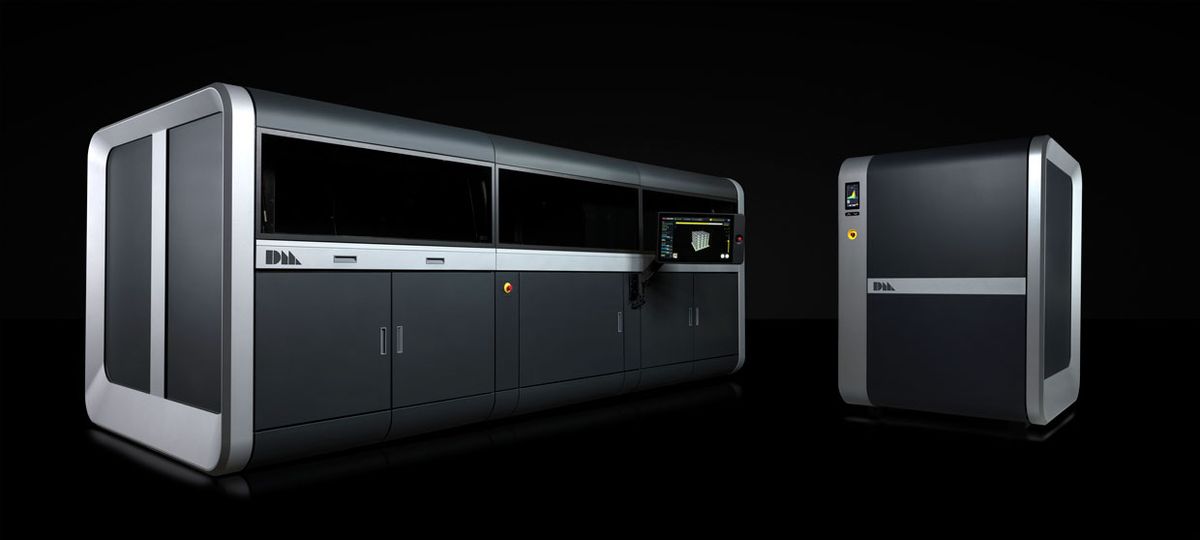It’s been five or so years since 3D printing was at peak hype. Since then, the technology has edged its way into a new class of materials and started to break into more applications. Today, 3D printers are being seriously considered as a means to produce stainless steel 5G smartphones, high-strength alloy gas-turbine blades, and other complex metal parts.
The technology for 3D printing (or additive manufacturing) of metals is finally hitting its stride. Two industries—aerospace and medical appliances—have already adopted it. Lawrence Gasman, president of Charlottesville, Va.–based industry analyst SmarTech Publishing, says, “There are no big aerospace companies that don’t use 3D printing for major parts in their aircraft. Obviously, there are some things that will never be 3D-printed, but it’s quite remarkable how much actually is.”
Many medical devices are also now 3D-printed—including hip cups, prosthetics, and dental appliances, says Terry Wohlers, president of Wohlers Associates, in Colorado, a consulting firm that specializes in 3D printing.
But, Wohlers says, aerospace and medical devices occupy a special niche because they must be especially strong, durable, and precise. In the United States, these industries are also subject to oversight by the Federal Aviation Administration and the Food and Drug Administration. So they have adopted cutting-edge 3D printers, sometimes at higher costs.

Wohlers Associates, in its annual 3D-printing industry reports, keeps close watch on the average selling price of these machines. Today, Wohlers says, the price of a conventional 3D printer that might produce polymer or ceramic parts at an industrial scale is US $94,250. Whereas, he says, the average selling price of an industrial-size metal 3D printer is currently $407,880.
Yet, says Jonah Myerberg, chief technology officer of Desktop Metal, newer 3D metal-printing technologies are in fact reducing costs, increasing throughput, and maintaining the same high-precision standards for many companies that try them.
Consider, for instance, a smartphone. Some 4G phones, Myerberg says, are made of aluminum. But transmitting signals at the higher frequency bands used by many 5G phones will work only with minimal interference from the phone’s metal body. The acceptable level of interference may be lower than what aluminum can deliver.
Phone companies are now considering a shift to stainless steel instead, Myerberg says. Because it’s stronger than aluminum, less is needed. And that means less interference and more room for the battery.
But there’s a hitch. “Switching the material from aluminum to steel takes 10 times as long to machine,” Myerberg says. “Because the steel is so much stronger than aluminum, it’s hard to cut.”
So Desktop Metal has a 3D metal-printing system that, he says, could be competitive with traditional manufacturing in this situation. The Burlington, Mass.–based company’s Production System uses a jet of metal powder and an oven to fuse the printed metal. The system boasts what the company is billing as the fastest metal 3D printer in the world, at 12,000 cubic centimeters of printed output per hour—100 times as fast as older, laser-based 3D metal-printing techniques.
The Production System prints stainless steel. “That’s one of the reasons we started using stainless steel first,” Myerberg says. “The demand from the consumer electronics market was so great that…stainless steel was right there at the top.”
On the other hand, other industries have lately found success with older, laser-based 3D metal-printing techniques. “Siemens is doing some interesting work with ground-based gas turbines,” Wohlers says. In printing the turbine burners with a laser-based 3D metal printer made by EOS, “they’ve consolidated 13 parts into one,” he says, “which means they’ve eliminated many welds, reduced [build time] from 26 weeks to 3 weeks, and reduced weight by 22 percent.”
Both BMW and Ford are investors in Desktop Metal. “We work very closely with them,” Myerberg says—although neither has announced any plans to use 3D metal printing in its car production lines. A tool company has, however.
Milwaukee Tool makes a specialty auger drill bit that will be 3D-printed on a Desktop Metal Production System. Milwaukee Tool had previously required 20 steps to make this one drill bit. 3D metal printing reduces that to four.
“I don’t think 3D printing is going to offset traditional manufacturing the way we all think it will. It’ll come in and find its place, alongside all these other manufacturing processes,” Myerberg says. “But I think that type of adoption is going to happen very quickly.”
This article appears in the April 2019 print issue as “New Metals Shine in 3D Printers.”
A correction to this article was made on 28 March 2019.
